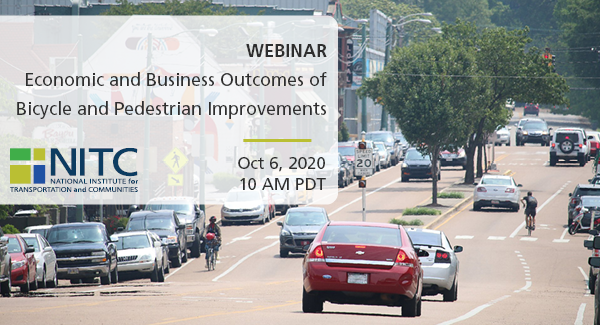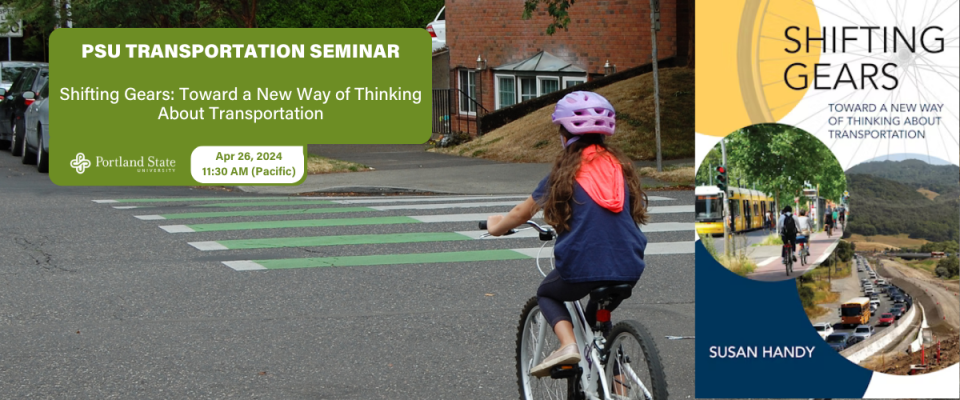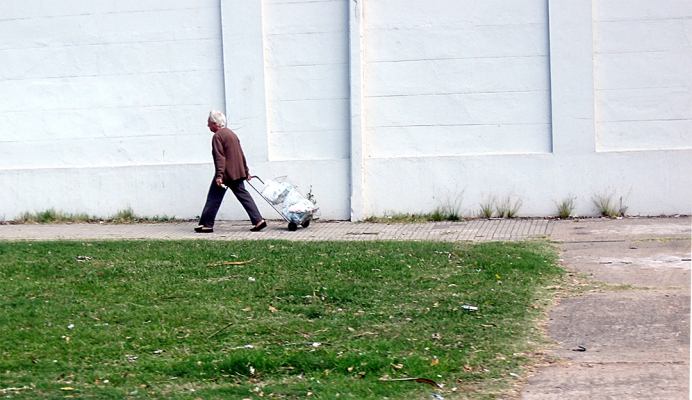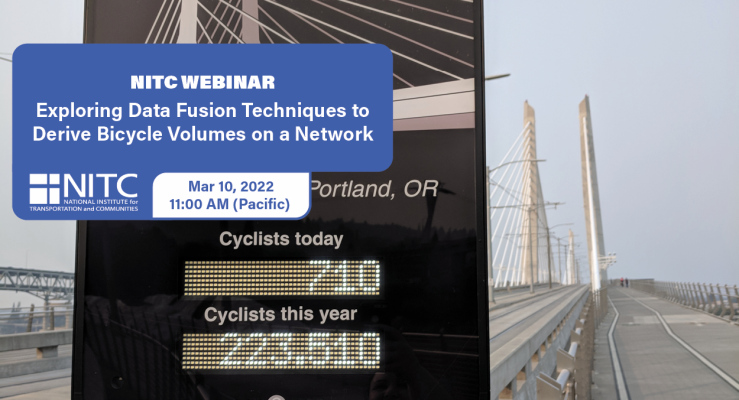PRESENTATION ARCHIVE
OVERVIEW
The National Street Improvements Study, conducted by PSU in conjunction with PeopleForBikes and consulting firm Bennett Midland, researched the economic effects of bicycle infrastructure on 14 corridors across six cities — Portland, Seattle, San Francisco, Memphis, Minneapolis and Indianapolis. The study found that improvements such as bicycle and pedestrian infrastructure had either positive or non-significant impacts on the local economy as measured through sales and employment. In this webinar, lead researcher Jenny Liu will share the results of the investigation and the unique methodology for investigating these economic outcomes.
THE RESEARCH
This webinar is based on a study funded by the National Institute for Transportation and Communities (NITC) and the Summit Foundation, and conducted at Portland State University. Read more about the research: ...
Read moreFriday Transportation Seminars at Portland State University have been a tradition since 2000. We've opened up PSU Transportation Seminars to other days of the week, but the format is the same: Feel free to bring your lunch! If you can't join us in person, you can always watch online via Zoom.
PRESENTATION ARCHIVE
THE TOPIC
The transportation system in the U.S. has been shaped by a core set of ideas that are embedded in professional practice. These ideas – freedom, speed, mobility, vehicles, capacity, hierarchy, separation, control, and technology – have produced a system in which most people are dependent on driving, with all the negative consequences that entails. Shifting to a system that offers people choices about their daily travel requires a shift in thinking on the part of the transportation profession. In this talk, I take a critical look at...
Read moreThe video begins at 2:51.
Adam Moore: Bus Stop Air Quality: An Empirical Analysis of Exposure to Particulate Matter at Bus Stop Shelters
Congested traffic corridors in dense urban areas are key contributors to the degradation of urban air quality. While waiting at bus stops, transit patrons may be exposed to greater amounts of vehicle-based pollution, including particulate matter, due to their proximity to the roadway. Current guidelines for the location and design of bus stops do not take into account air quality or exposure considerations. This study compares the exposure of transit riders waiting at three-sided bus stop shelters that either: 1) face the roadway traffic or 2) face away from the roadway traffic. Shelters were instrumented with air quality monitoring equipment, sonic anemometers, and vehicle counters. Data were collected for two days at three shelters during both the morning and afternoon peak periods. Bus shelter orientation is found to significantly affect concentration of four sizes of particulate matter: ultrafine particles, PM1, PM2.5, and PM10. Shelters with an opening oriented towards the roadway were consistently observed to have higher concentrations inside the shelter than outside the shelter. In contrast, shelters oriented away from the roadway were observed to have lower concentrations inside the shelter than outside the shelter. The differences in particulate matter...
Read moreThe video begins at 0:34.
View slides
Speaker: Joseph Broach, Ph.D. Candidate, Portland State University
Topic: Trick or Treatment? Impact of Route-Level Features on Decisions to Walk or Bike
Summary: Some travel routes attract people walking and cycling, while others may scare them away. What features of street environments are most important, and how do available routes affect decisions to bike or walk on a specific trip?
Research to date has focused on either large-scale areal measures like "miles of bike lane nearby" or else has considered only shortest path routes. Neither method is suited to capturing the impact of targeted route-level policies like neighborhood greenways. This session will present a new technique for measuring bike and walk accessibility along the most likely route for a given trip. The method is applied to travel data, and results provide new insight into the relationship between route quality and travel mode choice.
The video begins at 4:13.
Wei Feng: Impacts of Economic, Technological and Operational Factors on the Economic Competitiveness of Electric Commercial Vehicles in Fleet Replacement Decisions
Electric commercial vehicles (ECV) have the potential to substantially reduce greenhouse gas emissions, noise, and pollution in urban areas. In addition, ECVs have lower per-mile operating costs and potentially lower maintenance costs. However, the initial purchase cost of ECVs is significantly higher than the purchase cost of a conventional diesel vehicle. From a purely economic perspective, there is a cost tradeoff between the low operating and maintenance costs of ECVs and their high initial capital costs. In this paper, a fleet replacement optimization framework is employed to analyze the competitiveness of ECVs. Scenarios with different fleet utilization, fuel efficiency and sensitivity analysis of ten additional factors indicate that ECVs are more cost effective when conventional diesel vehicles’ fuel efficiency is low (8.2 miles/gallon) and daily utilization is more than 54 miles. Breakeven values of some key economic and technological factors that separate the competitiveness between ECVs and conventional diesel vehicles are calculated in all scenarios. For example, in low conventional diesel vehicle fuel efficiency and low daily utilization scenario, ECVs are more competitive when their purchase prices...
Read morePRESENTATION ARCHIVE
OVERVIEW
Planners and decision makers have increasingly voiced a need for network-wide estimates of bicycling activity. Such volume estimates have for decades informed motorized planning and analysis but have only recently become feasible for non-motorized travel modes.
Recently, new sources of bicycling activity data have emerged such as Strava, Streetlight, and GPS-enabled bike share systems. These emerging data sources have potential advantages as a complement to traditional count data, and have even been proposed as replacements for such data, since they are collected continuously and for larger portions of local bicycle networks. However, the representativeness of these new data sources has been questioned, and their suitability for producing bicycle volume estimates has yet to...
Read more



